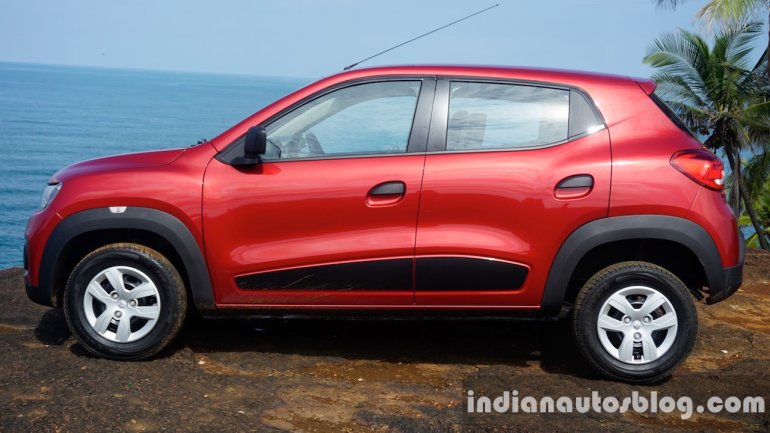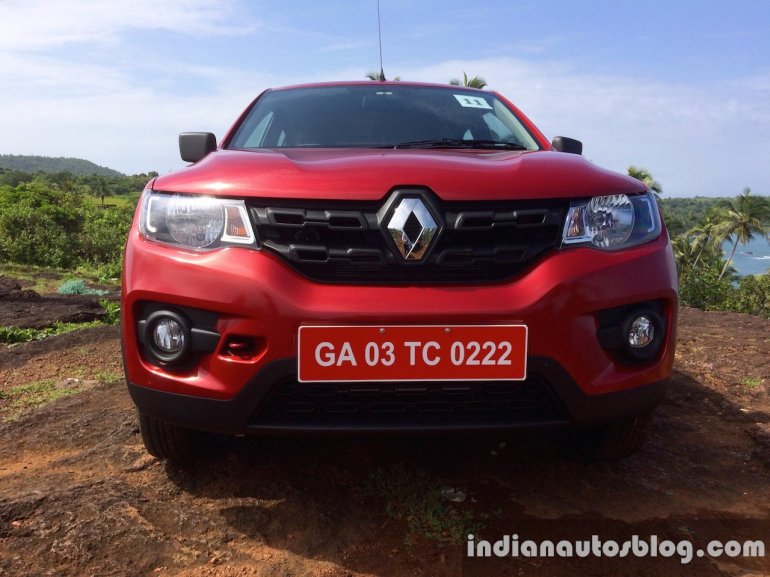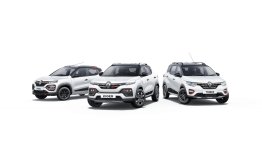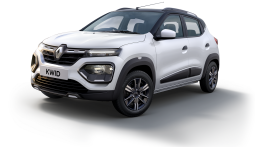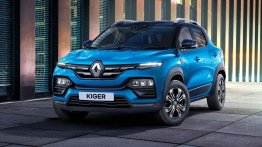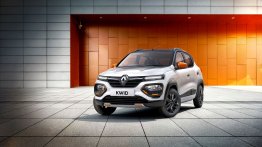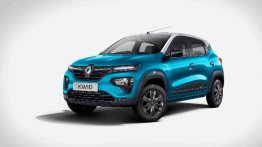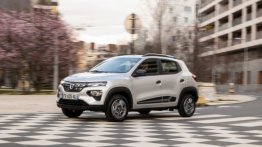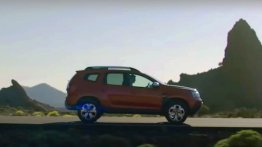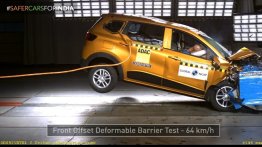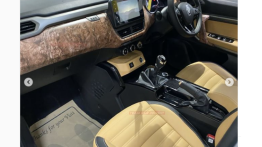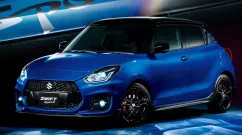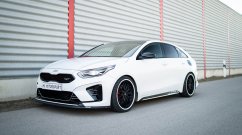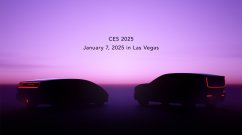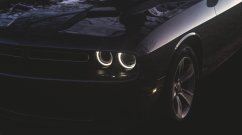If the product development memo for a Mercedes S Class reads, “Throw everything you have at it”, the one for an Indian small car reads, “Remove everything you can from it”.
Innovating in the small car segment is inherently difficult. There is very little room - literally - to play with the design. And the price tag is tiny, which automatically warrants a scarcity in feature/ specification allocation. The resulting cars are not very desirable, obsolete on space, ultra weak in performance, but do serve a very large market segment that constitutes mostly first-time car buyers.
To stand out here, it requires something very special. Carlos Ghosn, the president of the Renault-Nissan Alliance, pulled 69 year old Gerard Detourbet out of retirement back in 2012 to do just that. The result is the Renault Kwid, a small car unlike any seen before, and the first true challenger to the might of the Maruti Alto.
So then, who or what is the Renault Kwid? A nice name to start with.
The Kwid is an all-new car from Renault’s stable, largely designed & developed in India with a tremendous 98% in parts localisation. That localisation comes mostly from Chennai, where the Renault-Nissan Alliance manufacturing is based out of. The Kwid is the first recipient of the CMF-A platform that will also spurn other products in the future. It comes powered by a 3-cylinder 800cc 'SCe' petrol engine. The ‘SCe’ nomenclature expands to 'Smart Control Efficiency' and Renault isn’t kidding with that. With an ARAI certified fuel economy of 25.17 km/litre, the Kwid is officially India’s most fuel efficient petrol car, which means bonuses at Maruti have suddenly been stalled.
How did they achieve those figures?
It was made possible by a super-frugal engine and an ultra light construction wrapped around 6 years of Indo-French work. Renault states that over 50% of the development cost of the entire project was spent on the engine alone. The rest, I believe, was spent on a treadmill. At 669 kilograms, the Kwid beats the Alto by 26 units and the Tata Nano by a huge 100 kilograms. Even for a small car, the Kwid is a whisker on the scale.
Much of it was made possible by some clever engineering on Renault’s part. A lot of the material choice that has gone into building the Kwid is plastic including a lot of parts in the engine bay, which is alright. But I think the development folks went a bit too far when they decided to forge the oil sump in plastic too. That’s a risk on Indian roads. Besides that, fastener load has dropped. Yes, you heard it right - fasteners.
Engineering Head of the Kwid, Gerard Detourbet explained that normal road cars carry approximately 20 kilograms of fasteners. That figure on the Kwid is 14. That’s 6 kg of fastener load that Renault has been able to eliminate on the Kwid. In the 100 or so kilometre drive, everything on the car held up together - as it should - but longer term reliability will only be known - in the longer term. That 25.17 km/l figure seems plausible now, doesn’t it?
The strongest selling point for the Kwid will be its design. Most first impressions have placed the car on the league of premium expensive hatchbacks. If the Kwid’s lines have forced hatch makers higher up the segment to think harder, it has made the equivalent competition from the likes of Maruti and Hyundai feel completely non-equivalent. It really defines itself very well out on the road, more so in-person.
I placed it next to a Renault Duster and guess which looked better. The Kwid costs a quarter of its much bigger cousin. Copious amounts of detailing has gone into those headlamps, grill and bumpers. All of which is unexpected in the small car segment, and that’s why Renault has been able to deliver something compelling.
Speaking of the Duster, Renault India’s current bread & butter is one of the best handling cars out on Indian roads today. And the Frenchmen have somehow been able to trickle those dynamics down to the Kwid as well despite a simple suspension setup. Upfront, MacPherson struts sit in comfort alongside a lower transverse linkage and towards the rear, there are coil springs mated to a twist beam. Simple enough? Yes. Best driving car of the segment? You bet. I would however toss the 13 inch steel rims for alloys and the 155/80 profile tyres for something more potent. Will only improve on what is already an excellent riding automobile.
All that riding and momentum is of course officiated by the 800cc engine. The three cylinders on it produce 54 hp of power and 72 Nm of torque. Not terribly exciting figures but they still beat the ones found on the Maruti Alto 800 or the Tata Nano and are just shy of the Eon. The engine is also partly responsible for that 25.17 km/l efficiency number (ARAI), and hence responsible for the weak propulsion metrics. I was harpooning around Goa’s infamous winding-twisting lanes that constantly changed elevation (& scenery) and the Kwid struggled for breath.
The 5-speed manual gearbox was human friendly in shift characteristics on one end, and an expert jockey to a horse on the other. Just that no amount of expert whipping could excite the engine to pull better. With a 28 litre fuel tank, the Kwid has a theoretical range of 704 kilometres, but I would avoid pointing its pretty face at a weekend getaway. The good news is, Renault has confirmed that a 1.0 litre engine and an automated manual transmission are in the works for deployment on the Kwid at a later date. So until such a time arrives, enjoy the possibly low fuel bills and avoid things like overtaking other cars on the road.
The Kwid is a big car and the French automaker’s salesforce will go all-out in defining it as the country’s first micro-SUV to you. They wouldn’t be too far off with that placement. The Kwid rides high with 180 mm of unladen ground clearance, comes fitted with black plastic cladding all-round, features an i20 Elite defying 300 litre boot, is the longest and widest in the small car segment, has flared-square wheel arches, and certainly looks the part of an SUV. It is relatively spacious and well specced on the inside too. I am 6ft 1inch tall and didn’t feel like I needed to get out to catch some air. The interior build is functional, the plastics are long-lasting, cheap and uniform.
The MediaNav system will be a significant marketing draw for buyers. It has been lifted from the Duster and dropped straight into the Kwid, without feature downgrades. What it means is, you get 7 inches of responsive touchscreen that does things like audio delivery (2 front speakers), bluetooth telephony, bluetooth audio streaming, satellite navigation and offers USB/ Aux-In support alongside USB charging for phones. The roof mounted mic is located just above the driver’s head and is very receptive. And on the other side of the roof is the tallest radio antenna I have seen on a non-militarised vehicle. Hang a flag.
Storage options are aplenty. Double glove-boxes on the dash, a third open glovebox, doors that can hold 1 litre bottles, cupholders on the floor, open under seat storage and a parcel shelf in the rear. Windows are powered only at the front, even on the top trim, and have their switches on the centre console. Switches are large and comfortable to use; of a slightly better quality than the rest of the plastics adorning the interiors. The electric power steering is able for the car it guides, and the steering wheel itself is lean, nice to hold, but is devoid of any adjustability.
The instrument cluster is all-digital and features a speedometer, trip computer and gear shift indicator. The shift indicator is completely invisible to the eyes in broad daylight and the absence of a tachometer heightens your senses during overtaking maneuvers out on the road.
For the amount of car that Renault has been able to deliver for the money, internal mandates to eliminate things must have been strict, or even at gunpoint. The rear seat belts miss out on retractors and are hence impossible to use. Adjusting side view mirrors is a pain without internal stalks, and a dead pedal will be sorely missed by large footed drivers. A single roof mounted grab handle on the co-driver side could have made my drive around bends a bit more comfortable because the gentleman on my left could have then stopped using me as a grab handle.
On the safety side of things, the Kwid hasn’t undergone any European or American crash tests as of this writing and Renault states, “The Kwid meets all Indian safety regulations”, which we know doesn’t count for much. A single driver side airbag is being offered as an optional extra on the top trim of the Kwid; an ABS unit could have made things safer. Maybe with the introduction of the 1 litre engine? Just maybe.
So the competition really isn’t the Eon or the Nano, is it? With the kind of pricing that Renault has debuted for the Kwid, its sole focus is on the Alto 800, and on the product front alone, the Kwid manages to beat it spec to spec with remarkable ease. But market success is a different ball game all together.
The Kwid has made Maruti uncomfortable, but the Japanese kingpin still sits on the country’s largest automobile sales and service network. And when you have a three decade head start on the competition, the competition is forced to open large marketing coffers to gain significant traction. That’s what Samsung did to take on Apple in the smartphone race, and what Renault will have to do to take on Maruti here. Renault is already mapping the entire country and trying to open dealerships in quicktime, though I reckon opening smaller ‘Kwid Stores’ would be a better answer. It isn’t a high priced product, and would need deep market penetration.
At the time of filing this story, the Kwid has received over 50,000 bookings. If the response fizzes out before the first year, it certainly won’t be because of the car. And if it succeeds dramatically, it could very well be a great case study.
Renault Kwid: First impressions
- + Design
- + Space
- + Drivability
- — Stressed engine
- — Useless rear seat belts
- — No ABS
Variant: RXT
- Colours: Red, White, Bronze, Silver, Grey
- Engine: 800cc ‘Smart Control Efficiency’ with 12 Valves
- No. of Cylinders: 3
- Power: 54 PS @ 5678 RPM
- Torque: 72 Nm @ 4386 RPM
- Transmission: 5 Speed Manual
- Driveline layout: Front Wheel Drive
- ARAI Fuel Economy: 25.17 km/l
- Front Suspension: Mac Pherson Struts with Lower Transverse Link
- Rear Suspension: Twist Beam with Coil Springs
Features & Tech
- MediaNav Entertainment System
- Driver Side Airbag (Optional)
- Electric Power Steering
- Side Indicators integrated into Side Body Cladding Digital Instrument Cluster
- Front Power Windows
- Intermittent Wipers
- Remote Keyless Entry
- Gear Shift Indicator
- 2 Years Corrosion Protection
Dimensions
- Length: 3679 mm Width: 1579 mm Height: 1478 mm
- Wheelbase: 2422 mm
- Weight: 669 kg
- Boot Space: 300 Litres
- Fuel Tank: 28 litres
- Ground Clearance: 180 mm
- Tyres: 13 inch Steel Rims, 155/80 Profile






